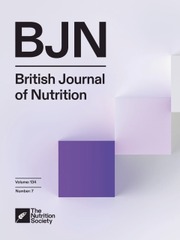No CrossRef data available.
Article contents
Regional fat mass estimation using bioelectrical impedance analysis in healthy adults
Published online by Cambridge University Press: 19 March 2025
Abstract
Whole-body and regional raw bioelectrical impedance analysis (BIA) parameters have been used to develop lean soft tissue estimation prediction models. Still, no regional fat mass (FM) assessment models have been provided. Hence, we aimed to develop and validate BIA-derived equations to predict regional FM against dual-energy X-ray absorptiometry (DXA) in healthy adults. One hundred and forty-eight adults (77 females) were included in this cross-sectional investigation. DXA assessed whole-body and regional FM and raw bioelectrical parameters of distinct body regions were measured using a 50 kHz phase-sensitive BIA analyser. BIA-derived equations were developed for each sex using a stepwise multiple linear regression approach in 2/3 of the sample and cross-validated in the remaining sample. The BIA-derived equations exhibited moderate to very strong relationships (P < 0·001) with DXA-measured FM of all body regions in females (r = 0·650 to 0·907) and males (r = 0·401 to 0·807). Also, for all the models, no significant deviation from linearity was found (P > 0·10). Agreement analyses revealed no associations between the differences and the means of the predicted and DXA-derived FM. However, the limits of agreement were large, with individual errors exceeding 50 % in females and 70 % in males. While the new BIA-derived equations provide a valid estimate of regional FM in middle-aged healthy adults at the population level, demonstrating a cost-effective alternative to DXA for assessing regional FM, caution is advised when applying these equations for individual-level analysis.
Keywords
- Type
- Research Article
- Information
- Copyright
- © The Author(s), 2025. Published by Cambridge University Press on behalf of The Nutrition Society



